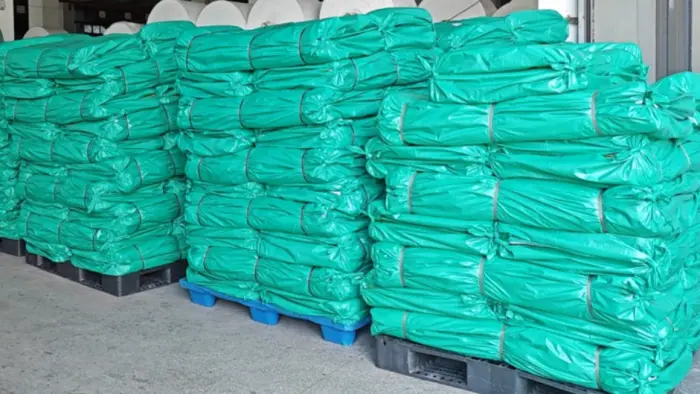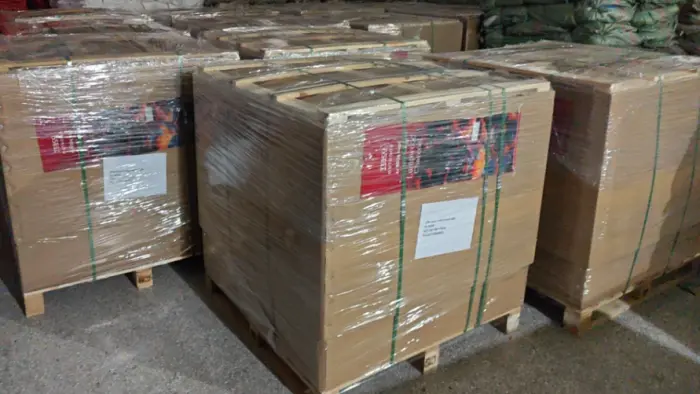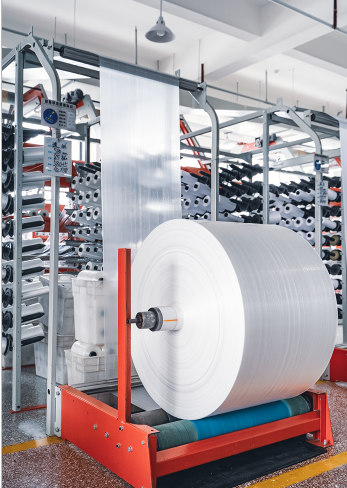
As more industries depend on efficient bulk packaging, manufacturers have developed various methods to ensure the safe transport and handling of FIBC bulk bags, such as palletizing and stacking.
Flexible Intermediate Bulk Containers (or commonly FIBC bulk bags) have been vital in packaging and transportation for many industries.
These bulk bags, often called jumbo bags, are designed to carry large volumes of materials, particularly for industries dealing with powdered, granular, or flaked materials.
Below, we’ll dive into what FIBC bulk bags are, their transportation methods, and common mistakes to avoid during the process.
An FIBC, or Flexible Intermediate Bulk Container, is a large, flexible woven bag made from durable polypropylene.
These bulk bags can hold a wide range of materials such as chemicals, food, sand, and other industrial products.
FIBCs are lightweight, easy to handle, and cost-effective for transporting large quantities of materials.
Bulk FIBC bags are available in various sizes and configurations, depending on the type of material they are intended to carry.
They typically hold anywhere from 500 to 2,000 kilograms of material and are often used for bulk shipping needs in sectors like agriculture, pharmaceuticals, construction, and food processing.
Transporting FIBC jumbo bags requires careful consideration of safety protocols and equipment.
The most common way to move these bulk bags is with the help of forklifts, cranes, or pallet jacks.
Many FIBC bags have built-in lifting loops at the corners, designed to be easily secured by forklifts or other lifting mechanisms.
Before transporting, it’s essential to inspect the bulk bags to ensure they are not damaged and that the material inside is securely packed.
These bulk bags should always be lifted and carried in compliance with the manufacturer’s recommendations to avoid damage during transport.
For an FIBC bag to be used safely and effectively, several requirements must be met.
First, the bag must be made from high-quality, woven polypropylene that is durable enough to handle large loads.
Additionally, the design must include lifting loops for easy handling and safety features like UV protection if the bag will be stored outdoors.
Other requirements include:
Various methods can be used to transport FIBC bulk bags, depending on the volume of bags, the material inside, and the distance traveled.
One common method of transporting FIBC bags is stacking them in a stable configuration, especially for storage purposes.
However, stacking should be done cautiously to avoid any risk of collapse, which could lead to product loss or accidents.
Placing bulk FIBC bags on pallets is an effective way to secure them for transportation.
Pallet packing allows forklifts to easily load and unload the bags, ensuring that they remain stable during the transportation process.
Another option is to place bulk bags into Gaylord containers.
These large, sturdy cardboard boxes help secure and protect the FIBCs during shipping.
Gaylord box sizes vary depending on the materials being transported, but they offer a robust and flexible solution for transporting bulky goods.
Gaylord shipping is commonly used for smaller amounts of bulk materials.
Additional transport methods include using carton packaging for smaller shipments or specific products, strapping the FIBC bags down on transport vehicles, and securing them inside shipping containers to prevent movement during transit.
Even though bulk FIBC bags are designed for easy handling, some common mistakes can lead to accidents, product damage, or inefficient transportation:
To ensure the safe and efficient transportation of FIBC bags, follow these tips:
Emptying an FIBC bulk bag correctly is just as important as filling it. To empty a bulk bag:
Step 1: Place the bag over a collection hopper or container to catch the material.
Step 2: Open the discharge spout located at the bottom of the bag. If the bag doesn’t have a spout, carefully cut the bottom to release the contents.
Step 3: Control the flow of the material to prevent spills. Close the discharge spout when done.
There are four main types of FIBC bags: Type A (standard bags without special features), Type B (antistatic bags), Type C (conductive bags), and Type D (bags that prevent sparks). Each type is designed for specific materials and safety needs.
FIBC bags are made from woven polypropylene fabric. The fabric is cut into the appropriate shapes, and then the pieces are sewn together to create the bag’s structure. The bags are often tested for durability before being used.
At XIFA, bulk bag transportation is handled with precision. We offer various packaging methods like pallet packaging, carton packaging, and conventional packaging to ensure the safety of materials in transit.

pallet packaging

carton packaging
Our approach ensures that our FIBC jumbo bags are securely packed, whether for road, rail, sea, or air transport.
Moreover, XIFA’s transportation processes are designed to meet the highest standards for safety and efficiency, reducing the risk of product loss or damage.




